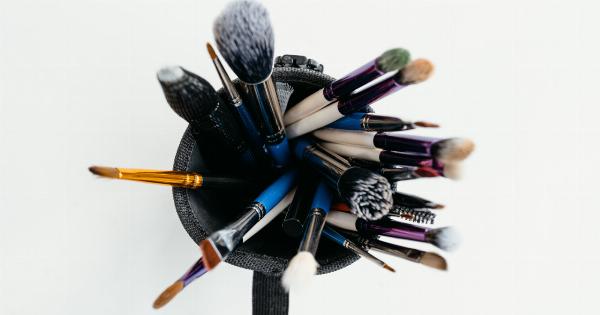Acne breakouts are often associated with adolescence, but many adults also struggle with this frustrating skin condition. If you find yourself dealing with unexpected breakouts in your adulthood, you are not alone.
Adult acne is more common than you might think, affecting people well into their 30s, 40s, and beyond. While the causes of adult acne may vary, it is crucial to understand that adult breakouts differ from teenage acne in several ways.
Understanding Adult Acne
Before we delve into the unexpected reasons behind adult breakouts, let’s first understand what adult acne actually is.
Adult acne refers to the occurrence of pimples, blackheads, and whiteheads in individuals who have already passed their teenage years. It can manifest as persistent acne that continues from adolescence or as late-onset acne that develops later in adulthood.
Hormonal Imbalance
Hormonal fluctuations are one of the primary triggers of adult acne. Both men and women experience hormonal imbalances throughout their lives, but they tend to be more pronounced in women due to menstrual cycles, pregnancy, and menopause.
Hormonal fluctuations cause the sebaceous glands to produce excessive oil, leading to clogged pores and breakouts. For women, hormonal acne typically flares up around the jawline, chin, and mouth area.
Stress and Adult Acne
Stress is another major contributor to adult breakouts. When we are stressed, our body releases cortisol, a stress hormone that affects the oil glands in our skin.
Increased cortisol levels can lead to an overproduction of oil, clogged pores, and subsequent acne flare-ups. Additionally, stress weakens our immune system, making it more difficult for the body to fight against acne-causing bacteria.
Diet and Adult Acne
Did you know that your diet could also be responsible for your adult breakouts? While many studies are ongoing, evidence suggests that certain foods may play a role in aggravating acne.
Foods with a high glycemic index, such as processed carbohydrates and sugary treats, can cause a spike in blood sugar levels, leading to increased oil production and inflammation. Dairy products have also been associated with acne breakouts in some individuals. It’s important to pay attention to your diet and be aware of any potential triggers for your skin.
Inadequate Skincare Routine
Having an ineffective or inadequate skincare routine can exacerbate adult breakouts. As we age, our skin requires different care compared to our teenage years.
Using harsh products or over-cleansing can strip the skin of its natural oils, triggering the sebaceous glands to produce more oil and leading to breakouts. On the other hand, neglecting to cleanse properly can allow oil, dirt, and bacteria to accumulate, causing clogged pores and blemishes. A gentle, balanced skincare routine tailored to your skin type is essential for maintaining clear skin.
Using the Wrong Skincare Products
Using the wrong skincare products for your skin type or using products that are too heavy or comedogenic can also contribute to adult breakouts.
It is essential to choose non-comedogenic, oil-free, and lightweight products specifically formulated for acne-prone skin. Look for ingredients like salicylic acid or benzoyl peroxide, which can help unclog pores and reduce inflammation. However, be cautious with introducing new products and always patch-test first to avoid potential irritations.
Frequent Touching of the Face
Do you find yourself resting your chin or touching your face frequently throughout the day? These seemingly innocent habits can transfer bacteria, dirt, and oils from your hands onto your face, potentially leading to breakouts.
It’s crucial to avoid touching your face unnecessarily and to keep your hands clean to minimize the risk of bacteria causing acne flare-ups.
Environmental Factors
Environmental factors such as pollution and humidity can also contribute to adult acne. Pollutants in the air can settle on the skin, clogging pores and causing inflammation.
Humidity, especially in hot and humid climates, can increase sweat production and oiliness, leading to breakouts. It is important to cleanse your skin thoroughly, use lightweight and breathable products, and protect your skin from environmental aggressors by wearing SPF.
Underlying Medical Conditions
In some cases, adult breakouts may be a symptom of an underlying medical condition. Polycystic Ovary Syndrome (PCOS) and other hormonal disorders can cause persistent acne in women.
Certain medications, such as corticosteroids or anticonvulsants, may also contribute to acne breakouts as a side effect. If you suspect that there may be an underlying medical cause for your adult acne, it is advisable to consult with a dermatologist or healthcare professional.
Managing and Treating Adult Acne
Now that we have explored the unexpected reasons behind adult breakouts, let’s discuss how to manage and treat adult acne effectively:.
1. Establish a Consistent Skincare Routine
Create a gentle and consistent skincare routine tailored to your skin type. Cleanse your face twice a day with a mild cleanser, moisturize with a non-comedogenic product, and use SPF protection during the day.
Avoid harsh, abrasive products and over-washing, as they can strip the skin and worsen breakouts.
2. Choose the Right Skincare Products
Invest in skincare products specifically formulated for acne-prone skin. Look for ingredients like salicylic acid, benzoyl peroxide, or tea tree oil, which can help unclog pores and reduce inflammation.
Patch test new products before incorporating them into your routine to ensure they don’t irritate your skin.
3. Avoid Touching Your Face
Resist the urge to touch your face unnecessarily. Keep your hands clean, avoid resting your chin on your hands, and refrain from picking or popping pimples. Touching your face can transfer bacteria and irritate the skin, making breakouts worse.
4. Manage Stress Levels
Find healthy ways to manage stress, such as practicing mindfulness, engaging in regular physical activity, or seeking support from friends and family.
Lowering stress levels can help regulate hormonal imbalances and reduce the likelihood of acne flare-ups.
5. Watch Your Diet
Paying attention to your diet may help identify potential triggers for your adult breakouts. Experiment with eliminating or reducing high glycemic index foods, dairy products, processed foods, and sugary treats to see if it positively impacts your skin.
Remember to stay hydrated and eat a balanced diet rich in fruits, vegetables, and whole grains.
6. Consider Professional Treatments
If your adult acne persists or is severe, it may be beneficial to seek professional help from a dermatologist.
They can prescribe topical or oral medications, perform treatments such as chemical peels or laser therapy, or suggest hormonal therapy if hormonal imbalance is the underlying cause.
7. Be Patient and Persistent
Clearing adult acne takes time and patience. Consistency is key when it comes to skincare, and it may take several weeks or even months to see noticeable improvements. Don’t get discouraged and stay committed to your skincare routine.
Conclusion
Dealing with unexpected breakouts as a grownup can be frustrating, but understanding the underlying reasons behind adult acne can help you effectively manage and treat it.
Whether it’s hormonal imbalances, stress, diet, or skincare routines, there are several factors that can contribute to adult breakouts. By establishing a consistent skincare routine, choosing the right products, managing stress, and paying attention to your overall health, you can take control of your adult acne and achieve clearer, healthier skin.































